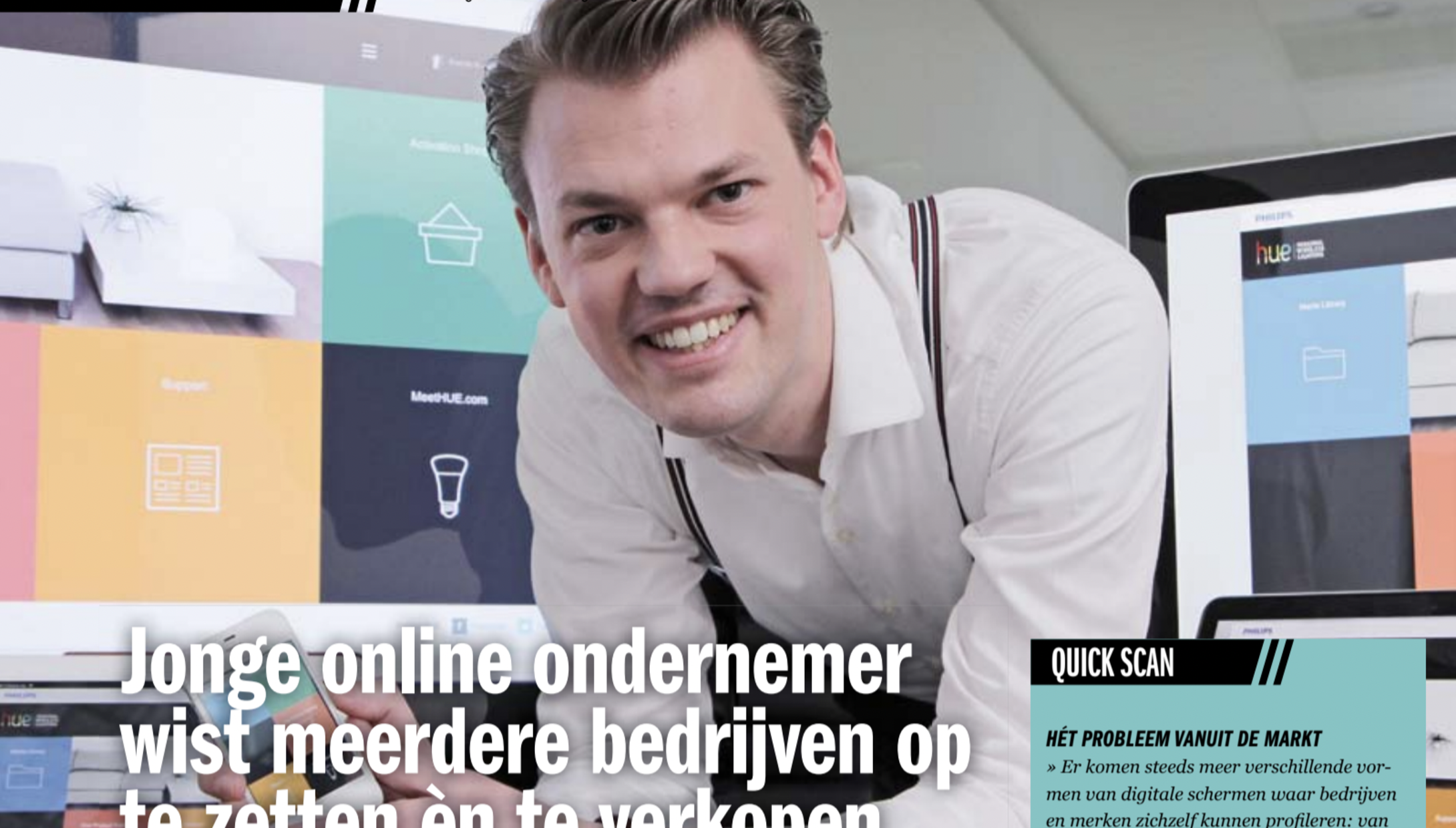Young online entrepreneur has set up and sold several companies

YOUNG ENTREPRENEUR
“During that time, 2003, I focussed on photography, graphic design, websites and video. The company expanded to 15 employees which is when I noticed that I was mainly ‘the manager’, whilst actually I wanted to be involved from a creative point of view. I divested almost all services and I started to focus solely on web design and development. That was definitely the right decision, I am able to get rid of my creative energy again and online is my true passion. Because we are able to develop everything at Tirato, we decided that we wanted to set up a number of online concepts ourselves. To this end, in 2009 I set up the Dutch Concept Group. We quickly built something, which was VeilingActies in which Sanoma Ventures soon invested and at a later stage I sold the concept to Tel Sell. The reason for that was that it grew into a business far too quickly and I wanted to continue to contribute from a creative point of view. The fact that you are very quickly, at a very young age, invited by such large businesses is exciting and you learn so much from that. When I was younger, I wasn’t particularly good with figures, but now I create prognoses for large investors. When VeilingActies was acquired I was asked for a Due Diligence investigation. “Are we going to do that?” I asked, but I did have to go on Google to find out what it was. I learn something new every day; that’s enterprise!”
Dutch Concept Group (Now NOBEARS Group)
“With DCG, we want to set up several online concepts. We invest in the development of new online concepts, not with money, but with knowledge and development. Depending on the concept, we will be looking for a suitable investor for this.” Meanwhile, in the background, Karelse is already working on a new concept that he has devised. He has already presented the concept to a large investment company. “Very exciting”, said Karelse. “But so very informative too!”
Tirato (Now NOBEARS Agency)
“Tirato, the internet company which I started with back in 2003, is actually at the heart of everything that we do. Through Tirato, we are able to develop all online applications and no-one can do that better than we can”, said Dustin Karelse laughing, but at the same time he sounds extremely convincing. “By working for so many different sectors, we see problems that we may run into across the board. By following all of the various trends, we see solutions that can be widely applied. By being a front runner in terms of trends, we are able to astonish our customers time and time again. Today we understand what companies can do with data; for example, we are currently developing web applications to show market forecasts.”
QUICK SCAN:
The problem with the market?
There are a growing number of different types of digital screens with which companies and brands are able to define themselves: from desk tops, smartphones, TVs and tablets, to digital watches, glasses, tables and so much more. Businesses are often unaware of the opportunities offered by these screens and do not know how to deal with the various types.
Your vision?
All digital screens have to be presented differently. In terms of design, but also most definitely in terms of functionality. Content will increasingly be driven by the user’s interest and behaviour. The technology is increasingly more capable of predicting what is relevant to the user, even before the user thinks of that himself.
Your solution?
Our solutions for customers are quite literally infinite. Responsive web design is a way of properly displaying the same platform, for example a website, on several types of screen from a single content management system. Design and functionality will then be presented differently on each screen type. Storing data of interest and attuning content to that is also becoming increasingly more important.
